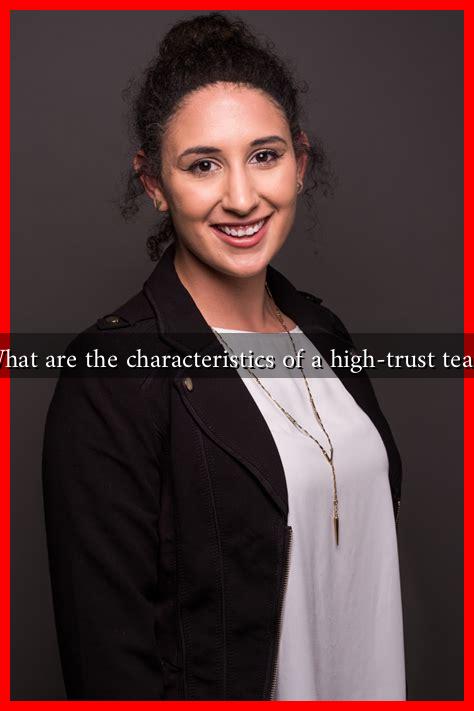-
Table of Contents
What are the Characteristics of a High-Trust Team?
In today’s fast-paced and interconnected work environment, the importance of trust within teams cannot be overstated. High-trust teams are not only more productive but also foster a positive workplace culture that encourages innovation and collaboration. This article explores the key characteristics that define high-trust teams, supported by research, examples, and case studies.
The Foundation of Trust
Trust is the bedrock of any successful team. It allows team members to feel safe in expressing their ideas, taking risks, and admitting mistakes. According to a study by the Harvard Business Review, teams with high levels of trust are 50% more productive than those with low trust levels. Here are some characteristics that contribute to building a high-trust team:
1. Open Communication
High-trust teams prioritize open and honest communication. Team members feel comfortable sharing their thoughts and feedback without fear of judgment. This transparency leads to better problem-solving and decision-making.
- Regular check-ins and feedback sessions.
- Encouragement of diverse opinions and ideas.
- Active listening practices among team members.
For example, Google’s Project Aristotle found that psychological safety, which is closely linked to open communication, was a key factor in team effectiveness. Teams that fostered an environment where members could speak up without fear of repercussions performed significantly better.
2. Shared Goals and Values
High-trust teams have a clear understanding of their shared goals and values. When team members are aligned in their objectives, they are more likely to collaborate effectively and support one another.
- Establishing a common vision that resonates with all members.
- Regularly revisiting and reinforcing team goals.
- Encouraging team members to contribute to goal-setting processes.
For instance, the team at Zappos is known for its strong culture of shared values, which has led to high employee satisfaction and loyalty. This alignment not only enhances trust but also drives performance.
3. Accountability and Reliability
In high-trust teams, members hold themselves and each other accountable. This reliability fosters a sense of responsibility and commitment to the team’s success.
- Setting clear expectations for individual roles and responsibilities.
- Encouraging team members to take ownership of their tasks.
- Recognizing and rewarding accountability within the team.
A case study from the software company Atlassian revealed that teams with high accountability levels were 30% more likely to meet their project deadlines. This demonstrates how accountability can enhance trust and performance.
4. Mutual Respect and Support
High-trust teams cultivate an environment of mutual respect and support. Team members value each other’s contributions and are willing to help one another succeed.
- Encouraging collaboration over competition.
- Recognizing individual strengths and leveraging them for team success.
- Providing support during challenges and celebrating successes together.
For example, the team at Pixar is known for its culture of respect and support, where feedback is given constructively, and every member’s input is valued. This approach has led to groundbreaking creativity and innovation in their films.
5. Conflict Resolution Skills
Even in high-trust teams, conflicts can arise. However, the ability to resolve conflicts constructively is a hallmark of a high-trust environment. Team members should feel equipped to address disagreements openly and respectfully.
- Training in conflict resolution techniques.
- Encouraging a culture where differing opinions are seen as opportunities for growth.
- Facilitating discussions to resolve conflicts before they escalate.
Research from the McKinsey Global Institute indicates that teams that manage conflict effectively are more innovative and productive.
Conclusion
High-trust teams are characterized by open communication, shared goals, accountability, mutual respect, and effective conflict resolution. These elements not only enhance team performance but also contribute to a positive workplace culture. As organizations strive for greater efficiency and innovation, fostering high-trust teams should be a priority. By investing in these characteristics, teams can unlock their full potential and achieve remarkable results.


